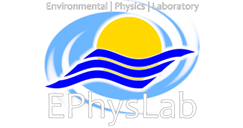Identification of hot areas in the region more influenced by future climate changes in evaporation minus precipitation
Some oceanic areas will in future show greater E-P, according to the climate models. Those regions with an increase greater than 0.3 mm/day were defined by Seager and Vecchi [2010] as hot spot source regions (HSSRs). Its characterization was made by comparing the periods 2046-2065 and 1961-2000 for boreal winter and boreal summer as predicted by the 15 GCMs used in the AR4 assessment.
We select only those HSSRs that affect each target region to detect the potentially vulnerable continental areas that receive moisture from these HSSRs using a Lagrangian method following Gimeno et al. [2013].
Approach: Forward tracking from hot spot sources regions
Temporal scale: Semiannual periods (ONDJFM and AMJJAS)
Patterns: Areas with (E-P)1-10<-0.01mm/day over target region

